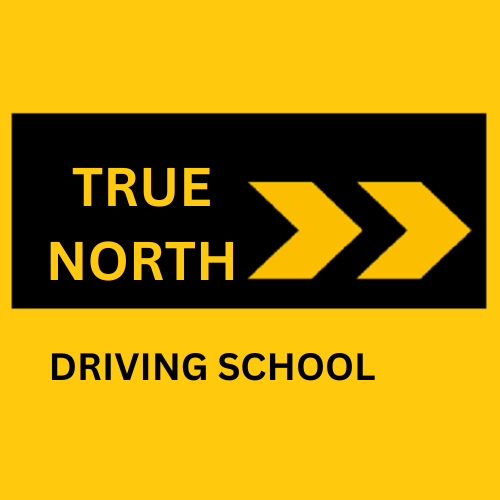Tips for passing road test in Prince George BC
As a driving instructor in the field of safe driving, I am here to provide you with essential tips and techniques to ensure your safety on the road. Whether you are a new driver or looking to brush up on your skills, these guidelines will help you become a confident and responsible driver.
1. Watch your speed
One of the most crucial aspects of safe driving is maintaining an appropriate speed. Speed limits are set for a reason - to ensure the safety of all road users. Adhering to speed limits not only reduces the risk of accidents but also allows you to have better control over your vehicle. Remember, it's better to arrive a few minutes late than to risk your life and the lives of others by speeding.Also make sure you follow the speed signs specially school zone , hospital zone or Playground Zone , Construction zone etc.
2. Keep your distance
Always maintain a safe following distance between your vehicle and the one in front of you. This gives you enough time to react and stop safely in case of sudden braking or unexpected obstacles. The general rule of thumb is to keep at least a two-second gap between your car and the vehicle ahead. Increase this distance in adverse weather conditions or when driving at high speeds.
3. Come to a complete stop
When approaching a stop sign or a red light, it is essential to come to a complete stop. Rolling stops or failing to stop fully can lead to accidents and endanger pedestrians and other drivers. Take the time to pause, assess the situation, and proceed only when it is safe to do so.
4. Scan intersections carefully
Intersections can be particularly hazardous areas, so it's crucial to approach them with caution. Scan the intersection from all directions, looking for any potential hazards or oncoming vehicles. Be aware of pedestrians, cyclists, and other road users who may be crossing. By being vigilant and observant, you can avoid collisions and ensure the safety of everyone involved.
5. Shoulder check
Before changing lanes or making turns, always perform a shoulder check. Mirrors alone may not provide a complete view of your surroundings, especially in blind spots. Turn your head and check over your shoulder to ensure there are no vehicles or obstacles in your intended path. This simple action can prevent accidents and ensure a smooth and safe maneuver.
6. Make clean turns
When making turns, it's essential to do so smoothly and safely. Signal your intentions well in advance to alert other drivers of your upcoming maneuver. Slow down, check for pedestrians and oncoming traffic, and make the turn smoothly without cutting corners. By executing clean turns, you minimize the risk of collisions and maintain a safe driving environment.
7. Traffic Lights:
When approaching a traffic light, it's crucial to be attentive and responsive. Red lights indicate a mandatory stop, requiring drivers to come to a complete halt before the intersection. Rolling through red lights not only violates traffic laws but also poses significant risks to oneself and others. Always respect red lights to prevent collisions and maintain order on the roads.
Similarly, yellow lights signal caution, indicating that the light is about to turn red. Instead of speeding up to beat the light, drivers should prepare to stop safely. Remember, yellow lights are not an invitation to accelerate but a warning to proceed with care.
Green lights signify the right of way, allowing vehicles to proceed through the intersection. However, it's essential to exercise caution and yield to any pedestrians or vehicles still within the intersection. Rushing through green lights without ensuring the intersection is clear can lead to dangerous accidents.
Left Turns on Traffic LIghts:
Firstly, before initiating a left turn, always yield to oncoming traffic. Take the time to assess the flow of traffic coming from the opposite direction and ensure there is a safe gap to make your turn.
Secondly, position your vehicle properly within the intersection while waiting to make the left turn. Pull forward into the intersection, keeping your wheels straight, and be prepared to yield to any pedestrians or vehicles still within the intersection.
Thirdly, maintain awareness of the traffic signal's timing. Green lights have a finite duration, and it's essential to gauge whether you have enough time to complete your left turn safely. Avoid hesitating excessively, but also refrain from rushing into the turn if oncoming traffic is still approaching.
Fourthly, utilize your turn signal well in advance to indicate your intention to make a left turn. Signaling alerts other drivers and pedestrians to your planned maneuver, allowing them to anticipate your actions and adjust their own accordingly.
Lastly, execute the left turn smoothly and efficiently. Check for pedestrians crossing the street and be mindful of any cyclists or other road users in your vicinity. Make the turn without cutting corners or encroaching into adjacent lanes, ensuring that your path is clear before proceeding.
7. Practice, practice, practice
Lastly, the key to becoming a skilled and confident driver is practice. Take advantage of driving lessons and practice sessions to hone your skills and gain experience. The more you practice, the more comfortable and proficient you will become behind the wheel. Remember, safe driving is a lifelong commitment, and continuous practice will help you stay sharp and aware on the road.
By following these expert tips and techniques, you can become a responsible and safe driver. Remember, safe driving is not just about your own well-being but also about protecting the lives of others on the road. Stay vigilant, obey traffic laws, and always prioritize safety. Happy driving!
